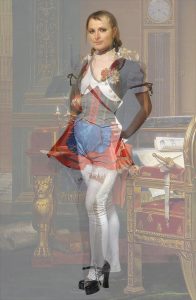Turner Carroll Artists in the News
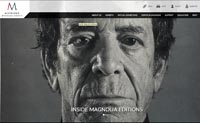
Willy Bo Richardson
Willy Bo Richardson was recently featured in the Latin American edition of Dental Tribune. In addition to having the cover, Willy was interviewed for the magazine by photographer Eric Kroll, A link to the article is here. Inside Magnolia Editions: Collaboration and Innovation opens at the Art Museum of Sonoma County on 12 December 2015. Under the direction of Don and Era Farnsworth since 1981, Magnolia Editions has been on the front lines of innovation, collaboration, and advocacy for timely and pressing social and political issues. The exhibition runs through 7 February 2016. A link to the museum is here.
Turner Carroll artists Rupert Garcia, Squeak Carnwath, Deborah Oropallo, Chuck Close, Enrique Chagoya and Hung Liu all have works represented in the show. Also showing this month is Wanxin Zhang at the San Jose Museum of Art. The show Character Studies: Clay from the Collection runs through 7 February 2016. Wanxin’s work was pointed out “one of a new generation who are continuing this region’s legacy of prominence and innovation in the medium.” The exhibition page of the museum’s web site is here.
Heroes Exhibition and Construct Reviews

Rusty Scruby – Construct in Colorado Creates
We’ve gotten some very good write-ups lately. Kate Petley and Rusty Scruby’s current exhibition Construct was written up by Leanne Goebel in Colorado Creates. Also, we received a great review of the Hung Liu, Deborah Oropallo and Squeak Carnwath show Heroes in Art Ltd. It’s a great issue of a great magazine and has lots of coverage of Santa Fe and Albuquerque in the July/August issue.
A copy of the Art Ltd. review may be downloaded here.
Bay Area Artist Deborah Oropallo Digitally Reinterprets 29 January 2012
Take one look at Deborah Oropallo’s artwork, and you haven’t seen anything. This Bay Area artist’s hybrid prints are so intricate that one’s eye must linger and settle to take it all in, peeling away the layers to extract a narrative.
And that narrative is certainly a unique one. In a lecture at the Berkeley Art Center this past Saturday, Oropallo addressed a crowded room and dissected both the technical and creative process of creating her large print pieces. For Oropallo, these pieces are sometimes a constant work in progress; she can always find some way to add or subtract or distort the various pieces that make up her work. Add a gas mask, subtract some bunny ears, and you get a whole new story. Take her recent series entitled “Guise,” nineteen prints that overlay the images of females in sexy Halloween costumes on top of 17th-and-18th-century portraiture, and, in doing so, explore the relationship between gesture and seduction, pose and power.
On the technology she used to create such strange fusions, Oropallo notes on Gallery 16’s website, “I do not want to just repaint an illustration of what the computer can do, but to push the pixels themselves as paint, and to layer imagery and veils to create depth and volume. Like painting, this process can engage nuance and subtlety. It also has the ability to alter an image in a way that no other medium can deliver or predict.” Thus, rather than seeing this technology as taking away the “artist’s hand,” as one audience member suggested, Oropallo views it as merely another medium with which to manipulate imagery to create her own narrative, one that is freeing rather than prohibitive, as it allows her a freedom of time and a control that was never available in traditional print mediums. “Besides, my hand is technically controlling the computer anyway,” Oropallo joked.
Asked if she considered herself a feminist, as her work is often interpreted through such a lens, the answer was a polite but firm no. Oropallo explained that she does not intend for her work to spell out a certain political or social ideology. Rather, she goes where her artistic curiosity and interests take her, and it just so happens that the path leads to the same sorts of subject matters that certain interest groups are drawn to as well: issues of women and presentation, bondage, sexuality and power or lack thereof.
We see these themes unfold throughout her work, from the delicate calf extended out in the piece, “Napoleon” — a calf which belongs to both the proud, stately Napoleon, as well as the pigtailed, unmistakable female figure superimposed and layered over him. The two are similar in stance and gesture and so intermingled as to be indistinguishable: an emperor projecting his power, a sexualized female projecting something very different, or perhaps the same. With these prints, Oropallo makes her viewers question and revisit what draws us to these two dichotomous yet harmonious images.
And with any art that is based on the manipulation of preexisting work, Oropallo must deal with the issues of acquiring rights and discerning the line between new and old. Thankfully, Oropallo credits her gallery for granting her access to the famous portraits that are used in “Guise,” so she’s overcome such hurdles for now. But for Oropallo and other artists like her who dabble in the digital medium, this frontier comes with its own new difficulties involving property and interpretation, despite granting more creative freedom in other regards. No doubt, for Oropallo, such hurdles are worth the final result
Deborah Oropallo in D Magazine
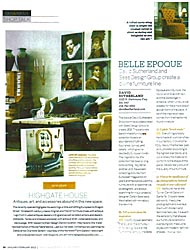
Deborah Oropallo in D Magazine
Turner Carroll Gallery friend and uber-designer, Carson See, is written about in the January 2012 D Magazine along with the work of Deborah Oropallo. Carson’s new line of furniture 1818, is featured at the David Sutherland Showroom in Dallas. Perfectly paired with the work of Deborah, the conjunction of male and female sensibilities in Carson’s 1818 line works brilliantly. A copy of the article may be downloaded here.
Dallas Art Fair
We just wrapped up a very successful Dallas Art Fair at the F.I.G. here in Dallas. Major works by Deborah Oropallo, Hung Liu, Rex Ray and Gino Miles found new homes. Most of these collections are important ones, and we are very pleased by the results. We look forward to more opportunities here in the future!
December 13, 2010 – JanuaryY 17, 2011 | Rojo: New Works by Hung Liu, Rex Ray, Inez Storer and Deborah Oropallo
Explorations on a theme of red. Jealousy, communism, love, blood, cocktails, sunset. We all know red is a very powerful color. What does it do in a painting? Come see these important American artists wrangle, submit, and explore what red means in a painting.
Opening Reception Friday, 13 December 2010 from 5 to 7pm.
Oct 1, 2010 – Apr 17, 2011 | New Visions: Contemporary Masterworks from the Bank of America Collection
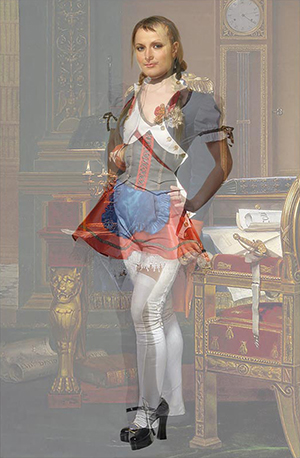
Napoleon
Curated by The Mint Museum, this special exhibition includes approximately 80 masterworks from one of the world’s finest corporate art collections, the Bank of America Collection. The selected works display the variety of philosophies, approaches and movements that have characterized the art world from the 1940s into the 21st century. Drawing from the strengths of Bank of America’s postwar holdings, the exhibition includes work by Milton Avery, John Chamberlain, Chuck Close, Helen Frankenthaler, Sam Gilliam, Jasper Johns, Louise Nevelson, Joan Mitchell, Ed Ruscha and Frank Stella among many others. These masters of contemporary art define well-known styles and movements such as Color Field and Abstract Expressionism, Pop Art, and Minimalism.
The Mint Museum Uptown Cell Phone Audio Tour is available for this exhibition. Dial in to listen to Mint Museum staff, volunteers, community leaders, and the artists themselves in a self-paced audio tour.
Lenseculture – Guise 27 March 2007
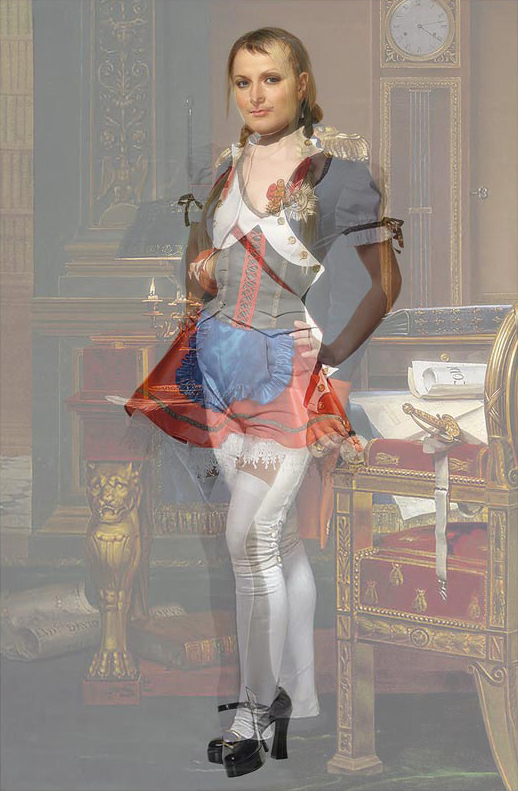
Napolean
Emerging more than twenty years ago from the San Francisco Bay Area, Deborah Oropallo (b. Hackensack, New Jersey, 1954) has moved from traditional painting and printmaking to incorporating digital media and imagery into her work, creating printed canvas paintings and related editions of pigment prints.
Oropallo has always regarded her artwork as based in photography. In her early work she painted imagery from found photographs. Later, she placed objects on a stat camera, capturing a shadow or silhouette from which she made silkscreens and stencils that transformed images of mundane objects into visual abstractions. Recently, Oropallo has been using her own photography, and digital work as a natural evolution. She says:
“I use the computer as the tool, but painting is the language of deliberation that is running through my head. I do not want to just repaint an illustration of what the computer can do, but to push the pixels themselves as paint, and to layer imagery and veils to create depth and volume. Like painting, this process can engage nuance and subtlety. It also has the ability to alter an image in a way that no other medium can deliver or predict.”
The images in her current body of work were initially borrowed from internet sites for sexy costume. Women in revealing pirate, soldier, and other outfits are posed in photographs that recall, in Oropallo’s words, “the formal portraiture male power stance with elaborate costume.” The artist deconstructs and enhances the images to investigate the seduction and power that are evoked by gesture and pose.
In GUISE, Oropallo further explores the concept by layering the images of men from 17th and 18th century portrait paintings. Painted portraits did not simply document the likeness of the sitter but were often contrived to convey a sense of his importance and authority. Nobility and dignity were attributes portrayed through stance, gesture, and attire, and portraits often involved costume and props. Soldiers wore elaborate uniforms and weaponry to show their bravery and stature; noblemen donned luxurious articles of clothing; and scholars and politicians stood with books at hand attesting to their knowledge.
Oropallo uses many famous portraits in GUISE, including several from the collection of the Fine Arts Museums of San Francisco. The valiant sea captain in Rembrandt’s (1606-1669) painting Joris de Caulerii (1632) becomes Gladiator; Sir Henry Raeburn’s (1756-1823) Sir Duncan Campbell, Scot Guards (ca. 1815) is transformed into the boxer of Knockout; and Paulus Moreelse’s (1571-1638) Portrait of a Man (ca. 1640) is reinvented as Lacy. The print George features George Washington as a uniformed soldier on the battlefield, over which is layered a woman in a provocative sailor outfit also standing with an arm akimbo. In all the prints, the vast symbolism of classic portraiture is employed, raising issues about gender, costume, fantasy, potency, power, and hierarchy. The artist asks, “Does the popularity of fetish fashion stem from the fact that it makes women appear strong and very powerful?”
— Anna Lucas, Achenbach Graphic Arts Council Curator 2006-2007
This essay is an edited version from the brochure accompanying Deborah Oropallo’s exhibition at the Anderson Gallery of Graphic Art at the De Young Fine Art Museum in San Francisco, March 17 – September 16, 2007. Read More

